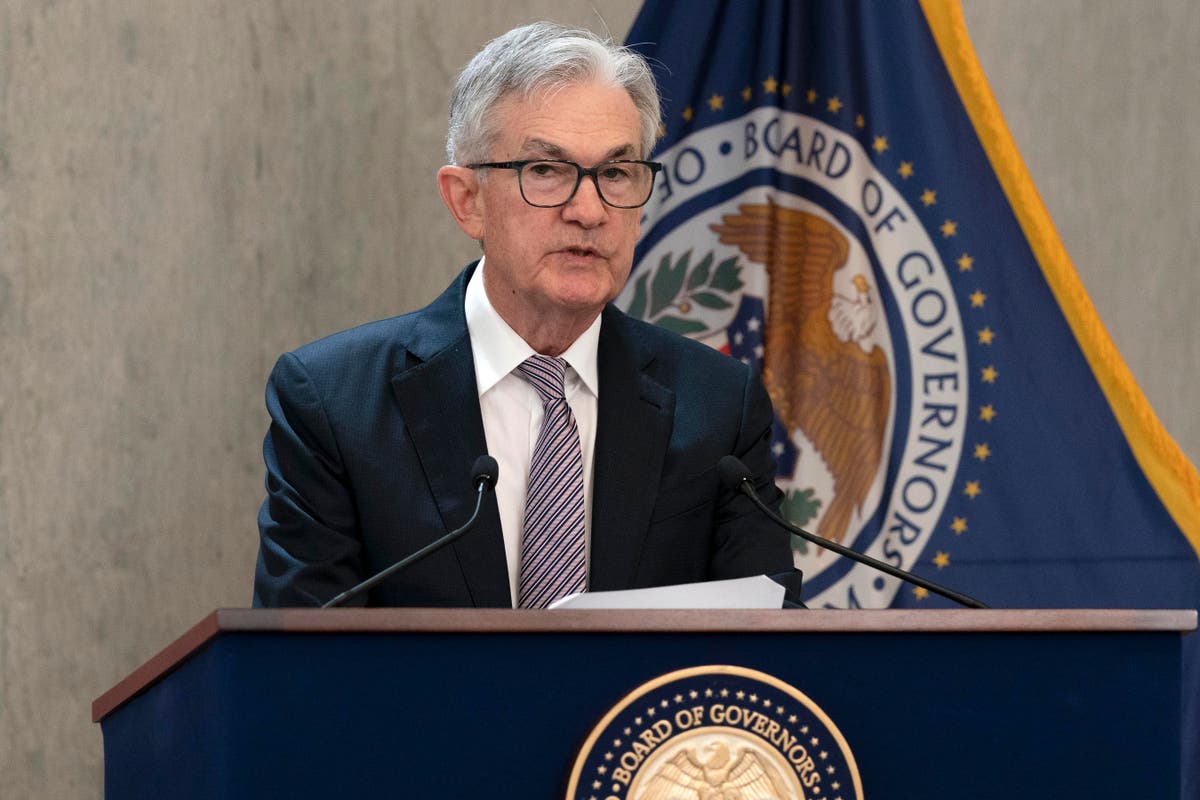Fed’s Powell facing rising criticism for inflation missteps

Federal Reserve Chair Jerome Powell won praise for his deft leadership during the maelstrom of the pandemic recession. As threats to the U.S. economy have mounted, though, Powell has increasingly struck Fed watchers as much less sure-footed.
Inflation has proved higher and far more persistent than he or the Fed’s staff economists had foreseen. And at a policy meeting last week, Powell announced an unusual last-minute switch to a bigger interest rate hike than he had previously signaled — and then followed with a news conference that many economists described as muddled and inconsistent.
It’s been a sharp turnaround for Powell, who is widely credited with preventing what could have been a far worse economic crisis during the pandemic and who last month won an easy bipartisan Senate confirmation for a second four-year term.
Now, as he confronts chronically high inflation, plunging financial markets and the growing threat of a recession, Powell is facing questions — and criticism — surrounding his stewardship of the Fed at a time when its challenges are multiplying.
Thanks to a once-in-a-century pandemic, the first European war in decades and soaring gas and food prices that the Fed has limited power to affect, Powell could become the first Fed chair since Paul Volcker in the early 1980s to grapple with “stagflation,” a miserable combination of slow economic growth and high inflation.
Struggling to curb the worst inflation outbreak in four decades, Powell last week engineered a three-quarters-of-a-point increase in the Fed’s short-term interest rate — the largest single rate hike in a quarter-century. It was an unexpectedly aggressive move after Powell had made clear a month earlier that a more modest half-point rate hike was coming.
At his news conference, Powell defended the Fed’s decision by noting that the most recent inflation readings had been even more worrisome than expected. The Fed’s hike will make it more expensive for many consumers and businesses to borrow.
Yet Powell’s explanation was faulted by many Fed watchers, with some complaining that he had failed to articulate a coherent and consistent policy.
“The Fed was ad-libbing, scrambling to catch up to the painfully higher inflation,” said Mark Zandi, chief economist at Moody’s Analytics. “The Fed doesn’t have a script and is kind of making it up as it goes here.”
William Dudley, who, as the former head of the Federal Reserve Bank of New York, served with Powell on the Fed’s Board of Governors, said on a think tank webcast last week that the central bank’s leader was putting its credibility at risk.
“When the Fed changes their mind at the last minute like this,” Dudley said, “it does have the potential to undermine the credibility” of its critically important communications with markets and the public.
As those criticisms echo, Powell will visit Capitol Hill this week to give his semi-annual testimony to House and Senate committees, where he could face tougher questions than at any other point in his tenure as Fed chair. He will testify one year after he stressed his confidence to Congress that inflation was temporary and would likely “wane.”
It has not. In May, the government reported, consumer prices accelerated 8.6% from a year earlier. At his news conference last week, Powell said the Fed had been surprised by the latest figures, which have been fueled by Russia’s invasion of Ukraine, still-clogged global supply chains, labor shortages and surging demand for services from rents to airline tickets to restaurant meals.
“We’re not seeing progress and we want to see progress and that’s really another part of why we did what we did today,” Powell said Wednesday.
The Fed’s huge rate hike and Powell’s comments renewed concerns among economists about where he has taken the Fed. Most analysts have sharply criticized the Powell Fed for waiting too long to tighten credit when inflation took off last year and warn that it’s now having to raise rates so fast as to risk tipping the economy into recession.
“Our worst fears around the Fed have been confirmed,” Ethan Harris, global head of economics at Bank of America, said in a client note last week. “They fell way behind the curve and are now playing a dangerous game of catch up.”
A related concern is that Powell has said the Fed will keep raising rates until there is “clear and compelling” evidence that inflation is declining toward its 2% annual target. But rate hikes typically take months to slow the economy. The Fed could end up raising rates more than is needed before it recognizes that inflation is falling, thereby elevating the likelihood of a recession.
“A hard landing is probably pretty likely,” Dudley said. “The risk of a hard landing has gone up.”
Last week, Powell expressed some optimism about the economy’s durability, though his confidence was more muted than in past months. He continued to hold out hope that the Fed could achieve a “soft landing,” meaning growth that would be slow enough to tame inflation without causing a downturn and widespread job losses.
Dudley suggested that Powell should do more to prepare the public for the likelihood of real economic pain.
Last week, the Fed’s policymakers updated their economic projections to show, for the first time since they started raising rates in mid-March, that they expect unemployment to rise and the economy to weaken over the next two years. Still, the projected increases were small, with unemployment rising to 3.9% by the end of 2023, just three-tenths of a point above its current level.
Many outside economists are more pessimistic, raising the question of whether the Powell Fed is still underestimating the damage the economy may absorb.
“They’ve gone from terribly unrealistic to marginally plausible in their forecasts,” Dudley said.
Other economists noted what appears to be a central contradiction in Powell’s comments: He said the Fed is raising rates more quickly and likely to a higher level than it had expected just three months ago because gas and food prices, the most visible signs of inflation, keep rising.
Yet “Powell openly admits the Fed has no control over” those supply shocks, said Krishna Guha, an economist at investment bank Evercore ISI. “Aspects of the press conference … did not seem perfectly coherent or wise.”
Powell can draw some solace from the fact that other central banks around the world also appear to be struggling to control inflation. On the same day that the Fed raised its key rate by three-quarters of a point, the Swiss National Bank announced a surprise half-point increase, its first hike of any size in 15 years.
The Bank of England has faced criticism for raising its key rate by a quarter-point for five straight meetings, a pace that some observers still consider too slow to counter inflation that could reach 11% this fall. The Reserve Bank of Australia has increased its benchmark rate twice in the past five weeks, after leaving it at nearly zero for 11 years.
Some economists speculate that in announcing last week’s surprisingly large rate hike, Powell intended to confound expectations by showing increased resolve by the Fed, even to the point of risking a recession if necessary to defeat high recession.
“They are taking a risk of overshooting, but I suspect that it’s a deliberate risk, given the priority they have of getting inflation down,” said Donald Kohn, a former vice chair of the Fed who is now a senior fellow at the Brookings Institution.
At the same time, most Fed watchers acknowledge that Powell’s tenure has been unusually challenging, starting with constant public attacks from former President Donald Trump — who had appointed him Fed chair — and later the pandemic recession and surging inflation exacerbated by Russia’s invasion of Ukraine.
“In the past year, it seems like everything’s gone wrong,” said Douglas Porter, chief economist at BMO Financial Group. “I think we’re actually due for a little bit of good luck. There is still a path for the economy to get through this without a full-on recession.”






